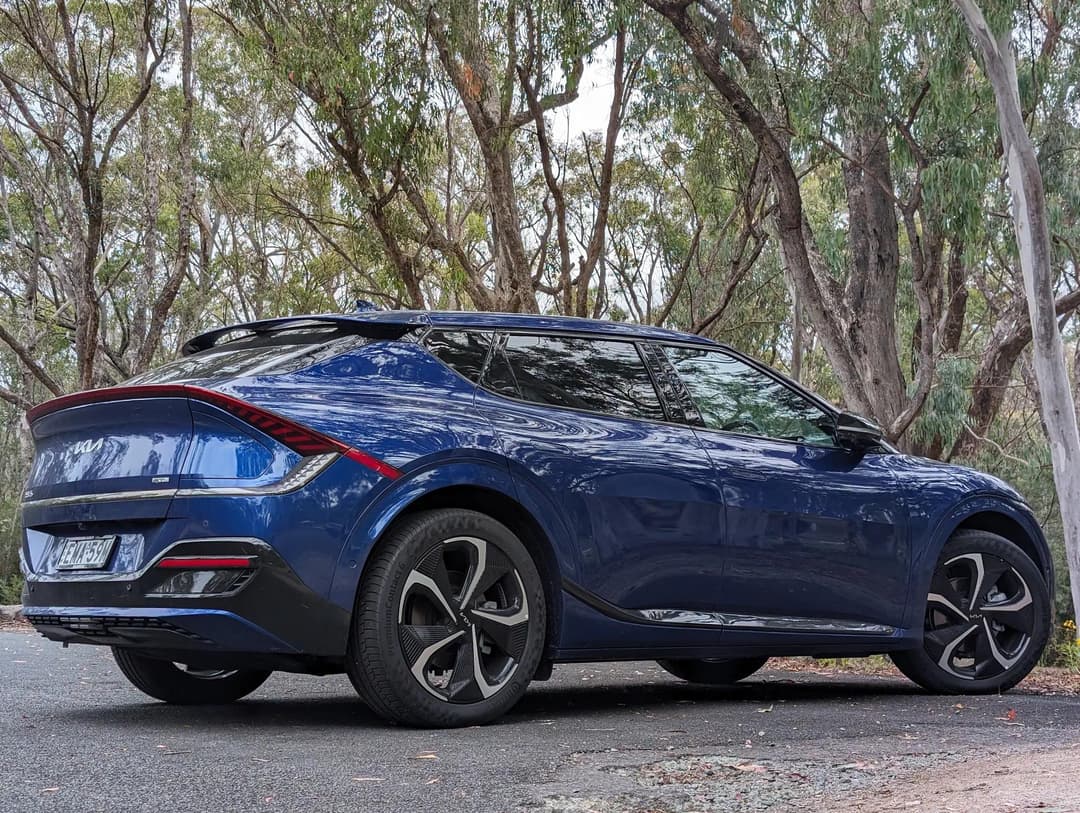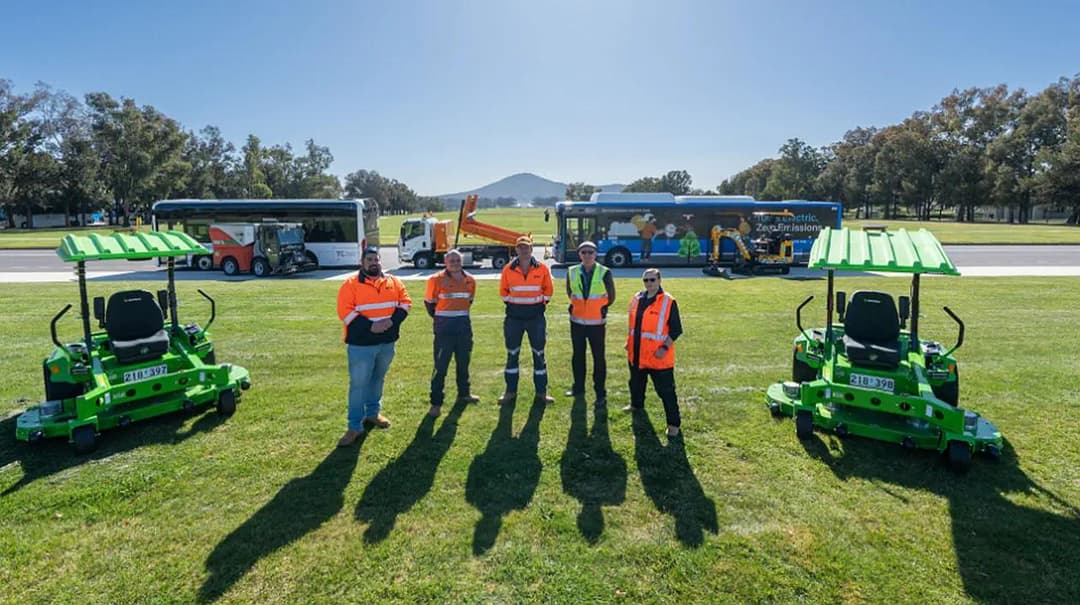The ACT Government, serving as both State Government and Local Council for Canberra's 450,000 residents, has become Australia's leader in the transition of government fleet and private cars to zero-emission vehicles.
Geoffrey Rutledge (Deputy Director-General, Environment, Planning and Sustainable Development Directorate at ACT Government) summarised how ACT has achieved this in his talk at the Sydney International EV Auto Show last week.

The ACT's small size allows them to be bold and nimble in attempting what others can't do as fast, their experience is creating a valuable roadmap for other Australian and international jurisdictions to follow.
From just a handful of battery electric vehicles 4 years ago, their government EV fleet has grown to over 400 vehicles (including PHEV). This progress is visible on Canberra's streets, with EVs becoming a normal sight and helping normalize the technology for the broader community.
Strategy and Targets for a Zero-Emissions Future
The Territory's commitment to Net Zero emissions by 2045 builds on their achievement of 100% renewable electricity in 2020.
The next major challenges focus on electrifying transport and building heating systems, as detailed in the Integrated Energy Plan launched in June 2024. The establishment of the ACT's Electric Vehicle Centre of Excellence at CIT ensures a skilled workforce will be available to support this transition.
The ACT Zero Emissions Vehicles Strategy 2022-30 sets ambitious targets: 80% of new light vehicles to be EVs by 2030 and a complete phase-out of new light internal combustion engine (ICE) vehicles including petrol and diesel cars – by 2035.
The strategy is already showing results, with EVs passing over 20% of all new vehicle sales in late 2023.
Fleet Progress and Model Diversity
The vehicle mix has diversified significantly, expanding from just the Nissan Leaf to include models from Polestar, BYD, Hyundai, Kia, Tesla, Cupra, and MG.
The government's own fleet demonstrates this commitment, with 248 Zero Emissions Vehicles (41%) and 189 Plug-in Hybrid Electric Vehicles (31%). I hope that PHEV purchases will be phased out quickly.
▶️MORE: Every Plug-in Hybrid EV (PHEV) Available in Australia
Building the Infrastructure
ACT government EV charging infrastructure is extensive, with 556 chargers installed including 39 in the UC Canberra Hospital basement carpark, 100 at community health centres, and 70 under one government building alone.
Real-World Experience and Overcoming Challenges
Real-world experience has debunked common myths about EVs. For instance, fires are far more likely in ICE vehicles than EVs.
The government has also demonstrated that EVs are practical for fleet use, with staff actively preferring to book EVs over conventional vehicles due to their superior driving experience.
Multi-unit dwelling challenges are being addressed head-on. With home charging costing about $900 less annually than public charging for a typical 12,000km yearly drive, the government is developing innovative solutions.
The Territory Plan now requires all new developments to be EV-ready, and a zero-interest loan program is being developed to help existing buildings retrofit charging infrastructure, which typically costs around $5,000 per unit.
V2G Success and Grid Integration
The ACT's vehicle-to-grid (V2G) trial has been successful. The trial has shown that EVs can provide crucial grid support - it would take just over 100,000 vehicles with V2G capability to support the entire NSW and ACT grid.
This is particularly significant given that EVs are predicted to increase grid demand by 30%, but to balance that their batteries will eventually become the largest form of battery storage in the national electricity grid.
▶️MORE: Bidirectional (V2H and V2G) EV Chargers Guide
The Broader Impact: Second-Hand Market and Heavy Vehicles
The transition has created numerous success stories. Staff have embraced EVs, noting their superior driving experience and overcoming initial range anxiety. The vehicles have proven more than capable of meeting fleet needs, with lower running costs than conventional vehicles.
The government's large-scale leasing of EVs is also developing a robust second-hand market - in 2024 alone, over 100 former ACT government EVs will enter the local second-hand market.

With the passenger fleet EV transition well underway the ACT government is transitioning the heavier diesel and other diverse vehicles in their fleet such as tipper trucks, excavators, street sweepers and mowers.
This has added benefits for workers of eliminating diesel emissions, noise, and vibration, creating a more pleasant and safer working environment.
The ACT's leadership in this space has led to other government and industry bodies seeking their advice on fleet transition.
About the author

Neerav Bhatt has been a technology journalist and photographer for over 20 years appearing in online, print, radio and TV media. His current focus is on helping Australians switch to electric vehicles as well as making their home fully electric, sustainable and climate resilient. Youtube: www.youtube.com/@NeeravBhatt Web: neeravbhatt.com
Stay up to date with the latest EV news
- Get the latest news and update
- New EV model releases
- Get money savings-deal
